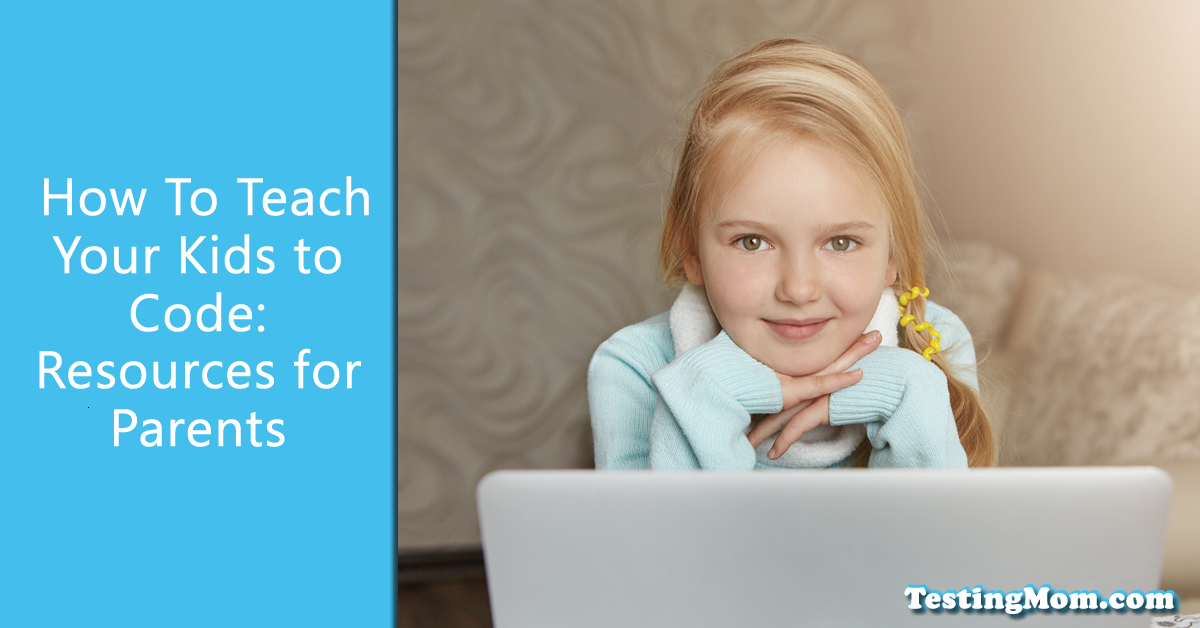How To Teach Your Kids to Code: Resources for Parents
Today we are welcoming guest author, Nupur Biswal, a parent and software developer, who shares some great tips for parents who want to teach kids to code.


Programming is a creative activity that any kid can engage in. Your child might not care about writing data processing algorithms, but they might enjoy creating games, programming music, designing websites, or just playing around with code.
Introducing computer programming to your kids can be a challenge, especially for those who aren’t familiar with the nuances of code. Whether you are a software developer or you have no programming background, here are few tips to help your child get started with programming: Fortunately, in the last few years, a number of apps, software, and guides have been produced that make the often-complex subject of computer coding easy to grasp for young learners. So where to begin? These are a few resources that parents can share with their kids to help them start learning about programming.
• Programming Tutorials From Made With Code By Google:
Google’s Made With Code project has a mission of encouraging girls to pursue careers in computer science. The Made With Code Projects are easy to follow, and if your kids are completely new to coding, don’t fret. There’s something for both intermediate and beginning coders. Plus, there are even more tutorials in the resource section with new offerings released periodically.
• Use Scratch for younger kids, Python for older kids:
Scratch is one of the most popular coding tools for kids, and it’s designed to help students with little to no coding experience dive into programming. Essentially, the software lets students create animations and stories with building blocks that mimic the structure of computer code. Luckily, the team behind the software has made it easy for beginners. There’s a wonderful Web based beginner’s guide that will help students get started, or you can download a PDF version. MIT’s Scratch is a free programming tool designed for kids that runs in any modern Web browser.
Kids between the ages of 8 and 13 will benefit from Scratch’s simple graphical interface. Scratch’s drag-and-drop code blocks snap together. Scratch is great for younger kids who haven’t developed typing skills.
Of course, kids who try to make more sophisticated programs will eventually run into a wall with Scratch. For teens and pre-teens, a real-world programming language like Python is more suitable. Python is an excellent first programming language because it has a simple syntax (unlike languages such as Java or C#), produces readable code (unlike Perl or JavaScript), and has a large and friendly community of developers behind it. If your child has outgrown Scratch, Python is the best next step.
• Tynker’s Hour Of Code Free Activities:
Tynker is a fun, intuitive suite of games that make it easy for kids to learn basic “computational thinking and programming skills.” Their Hour of Code feature is a great starting point for jumping into all that the site has to offer. Plus, be sure to check out the Parents section for ideas and tips to get started.
• Lesson and Tutorials from Code.org:
Code.org was launched in 2013 to advocate for wider access to computer science learning in schools. Aside from popular lessons like K-8 introduction to computers, there are so many links to information from a variety of sources.
• Computing Lessons From Khan Academy:
Khan Academy’s self-paced courses introduce a number of fascinating coding concepts to kids. From learning the basics of computer programming and animation, to more complex computer science subjects, these lessons are the perfect jumping off point for curious students. When you’re ready to get started.
Recommended Reading: Why Every Parent’s Home Needs to Have STEM Toys
